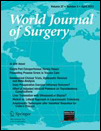Outcome of Various Treatments for Posttransplant Hepatitis B Virus Recurrence
Abstract
Background
Currently, no treatment guidelines are available for posttransplant hepatitis B virus (HBV) recurrence. We retrospectively evaluated the rate of clearance of hepatitis B surface antigen (HBsAg) from serum according to various treatment regimens in two large Korean liver transplantation centers.
Methods
Between 1996 and 2008, HBV recurred in 59 patients among 933 HBV liver recipients (6.3 %). Patients with HBV recurrence were divided into four groups according to their treatment: group L (lamivudine-based therapy n = 21) and group N [new nucleos(t)ide analogue (NA)-based therapy, n = 38]. Intravenous hepatitis B immunoglobulin (ivHBIG) had been simultaneously administered to 10 patients in group L and 26 patients in group N. The mean posttransplant follow-up duration and time to HBV recurrence were 69 (14–152) months and 37 (3–120) months.
Results
Overall, 22 patients (37.3 %) showed seronegative conversion of HBsAg for a median 8 months after treatment (range 1–15 months). The seroclearance rate was significantly higher in group N (n = 20, 52.6 %) than in group L (n = 2, 9.5 %) (p < 0.000). The time to seroconversion did not differ between group L (7 months, range 5–16) and group N (7 months, range 1–15) (p = 0.428). Subgroup analysis showed that the HBsAg seroconversion rate was much higher for patients given combined ivHBIG and new NAs (15/26 patients, 58.0 %) than the others (p = 0.006).
Conclusions
Seroclearance of HBsAg could be achieved using new NAs in half of the patients after posttransplant HBV recurrence. Combined ivHBIG may add a synergistic effect to new NAs for clearing HBsAg.
Conflict of interest
The authors of this manuscript have no conflicts of interest to disclose.




